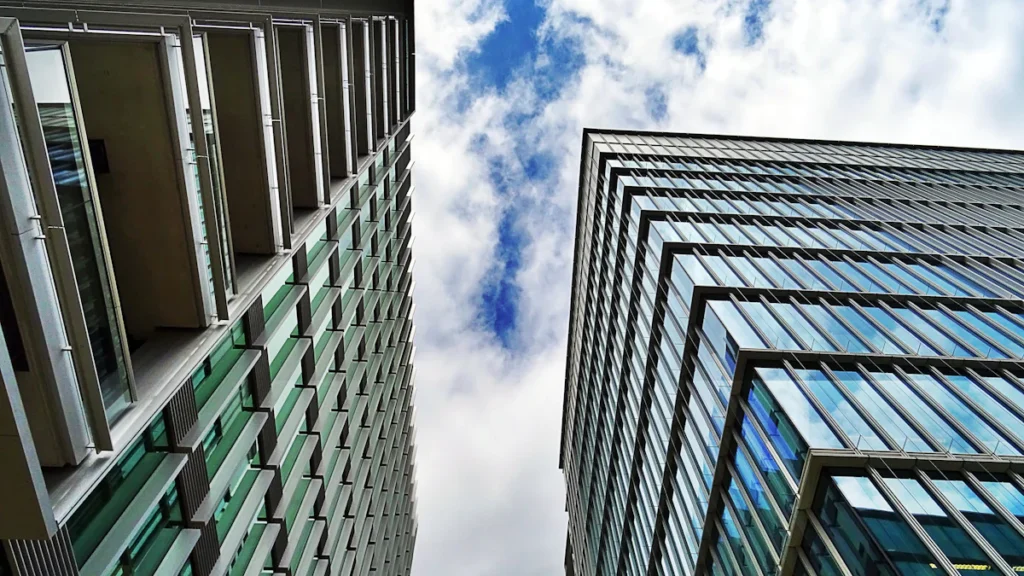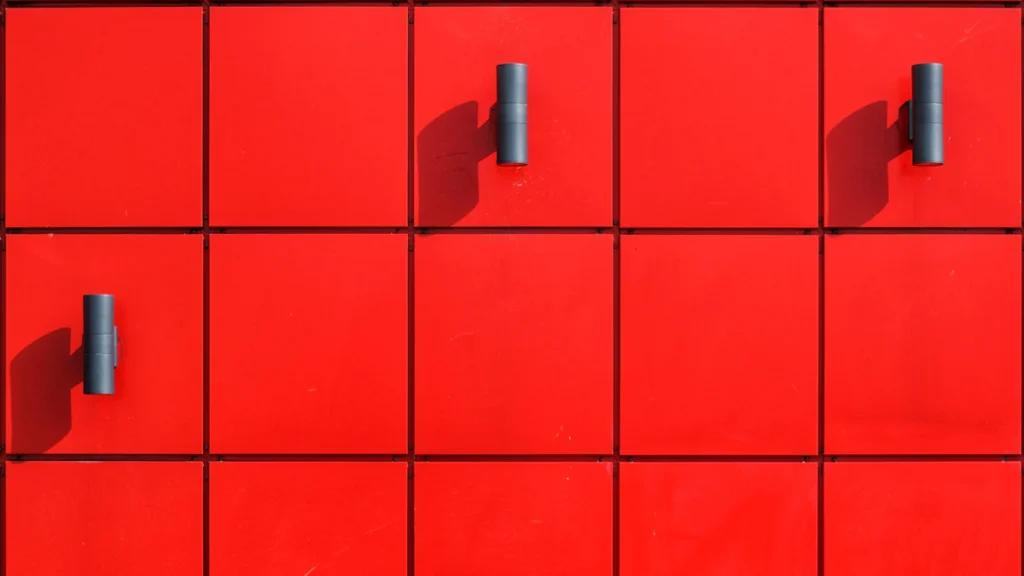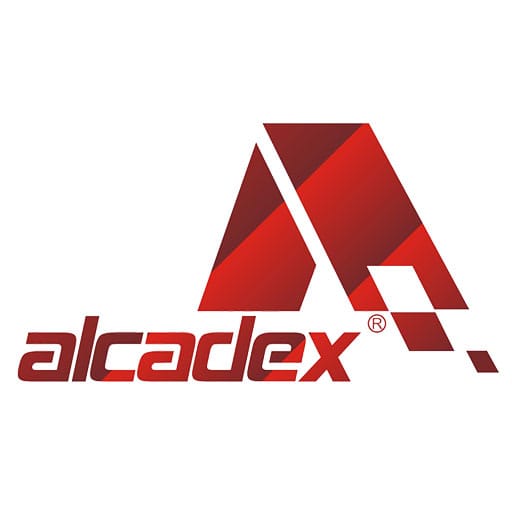
05 Mar How ACP Panels Stack Up Against Other Cladding Options
Table of Contents
- 1 Overview of ACP Panels and Their Key Features
- 2 Comparing ACP Panels to Other Cladding Materials
- 3 Key Factors Influencing the Choice of Cladding Material
- 4 Real-World Applications of ACP Panels
Choosing the right cladding material has become a critical decision in modern construction. You need a solution that balances durability, aesthetics, and cost-effectiveness. Aluminum Composite Panels (ACP panels) have emerged as a popular choice due to their versatility and performance.
The construction sector accounts for 60% of ACP consumption, driven by rapid urbanization and the demand for lightweight materials. Recent trends show a 30% rise in fire-resistant ACPs, making them ideal for safety-critical applications. Technological advancements also enhance their durability and design options, allowing for unique facades.
So, how do ACP panels compare to other cladding options?
Overview of ACP Panels and Their Key Features
What Are Aluminum Composite Panels?
Aluminum Composite Panels (ACPs) are modern cladding materials widely used in construction. They consist of two thin aluminum sheets bonded to a non-aluminum core. This core can be made of polyethylene or mineral-filled materials. The aluminum sheets provide durability, while the core enhances insulation and structural integrity.
- Polyethylene cores offer strength and thermal insulation, making them suitable for standard applications.
- Mineral-filled cores are designed for fire safety, limiting the spread of flames and ensuring compliance with safety regulations.
These panels combine functionality with aesthetics, making them a preferred choice for architects and builders.
Key Features of ACP Panels
Lightweight and Flexible
The lightweight nature of ACPs makes them easy to handle and install. This reduces construction time and costs. Their flexibility allows you to create unique designs, including curves and intricate shapes, without compromising structural integrity.
Weather Resistance and Durability
ACPs excel in durability and strength. They resist harsh weather conditions, including rain, UV rays, and temperature fluctuations. This durability & weather resistance ensures that your building maintains its appearance and functionality over time.
Aesthetic Versatility
Aluminum composite panels offer unmatched design flexibility. You can choose from a wide range of colors, textures, and finishes, including metallic, matte, and woodgrain. This versatility allows you to achieve creative architectural designs that stand out.
Types of ACP Panels
External ACP Panels
External ACP panels, often referred to as ACP sheets for exterior use, are designed to withstand outdoor conditions. They provide fire resistance and safety, making them ideal for high-rise buildings and commercial spaces.
Internal ACP Panels
Internal ACPs are used for interior applications like wall cladding and decorative purposes. They enhance aesthetics while maintaining the lightweight nature and durability of the material.
Comparing ACP Panels to Other Cladding Materials

ACP Panels vs. Solid Aluminum
Cost & Budget Considerations
When comparing ACP panels to solid aluminum sheets, cost becomes a significant factor. ACP panels offer competitive pricing, ranging from $20 to $60 per square meter, while solid aluminum sheets cost between $40 and $80 per square meter. This makes ACP panels a more budget-friendly option for large-scale projects like high-rise buildings and commercial facades.
| Panel Type | Cost Range (per square meter) | Advantages | Typical Applications |
|---|---|---|---|
| Aluminum Composite Panels | $20 – $60 | Lightweight, versatile, cost-effective | High-rise buildings, commercial facades |
| Solid Aluminum Panels | $40 – $80 | Strong, durable, customizable | High-impact areas, canopies |
Choosing ACP panels allows you to achieve a balance between affordability and functionality, especially when working with tight budgets.
Durability and Physical Resistance
Solid aluminum panels excel in durability and physical resistance. They withstand greater physical damage and resist corrosion, weathering, and impact. ACP panels, while durable, have a non-aluminum core that may degrade under extreme conditions like high impact or prolonged moisture exposure. However, ACP panels still provide sufficient durability & weather resistance for most applications, making them a practical choice for modern construction.
- Solid aluminum panels resist corrosion and weathering effectively.
- ACP panels are lighter and easier to install but may require regular maintenance to ensure longevity.
ACP Panels vs. Wood
Maintenance and Longevity
Wood cladding offers a natural, timeless appeal but requires significant maintenance. It is prone to warping, rotting, and pest damage, which can shorten its lifespan. ACP panels, on the other hand, require minimal upkeep. Their resistance to weather and pests ensures a longer lifespan, making them a more reliable option for both interior and exterior applications.
Aesthetic Appeal and Customization
ACP panels provide unmatched aesthetic versatility. They mimic natural materials like wood while offering a broader range of colors and finishes. This allows you to achieve unique architectural designs without the limitations of natural wood. In contrast, wood has limited customization options and often depends on availability and sustainability concerns.
- ACP panels offer finishes that replicate woodgrain, metallic, and matte textures.
- Natural wood provides a classic look but lacks the flexibility of aluminum composite panels.
ACP Panels vs. Stone
Structural Requirements and Weight
Stone cladding materials like granite or marble are heavy and require robust structural support. This increases the overall cost and complexity of installation. ACP panels, being lightweight, reduce structural demands and simplify installation. They also offer similar aesthetic appeal with finishes that replicate stone textures, making them a cost-effective alternative.
Installation Complexity and Cost
Installing stone cladding involves skilled labor and longer timelines. Replacing damaged stone slabs can be challenging, as matching the existing material is often difficult. ACP panels, in contrast, are easier to install and replace, saving time and labor costs. Their lightweight nature further reduces transportation and handling expenses, making them a practical choice for modern construction projects.
Tip: If you want a durable, lightweight, and cost-effective cladding solution, ACP panels outperform traditional materials like stone and wood in most scenarios.
ACP Panels vs. Fiber Cement
Weather Resistance and Longevity
When it comes to weather resistance, both ACP panels and fiber cement cladding perform exceptionally well. Aluminium composite panels resist temperature fluctuations, rain, and impact, ensuring durability in harsh conditions. Fiber cement panels, however, offer additional benefits. They resist rot, termites, and fire, making them a safer choice for long-term use. While ACPs are lightweight and versatile, fiber cement panels are heavier but boast a longer lifespan. This robustness makes them ideal for areas prone to extreme weather.
If you prioritize ease of installation and design flexibility, ACP panels stand out. Their lightweight nature simplifies handling and reduces construction time. Fiber cement panels, though heavier, provide unmatched resilience against weather challenges. Both materials excel in durability, but your choice depends on the specific needs of your project.
Environmental Impact and Sustainability
Environmental considerations play a crucial role in selecting cladding materials. ACPs can be made from recycled materials and are recyclable at the end of their lifespan. Their lightweight nature also reduces transportation emissions. However, the production process for aluminium composite panels is energy-intensive, leading to significant carbon emissions. Recycling aluminum, while possible, consumes a lot of energy.
Fiber cement panels, on the other hand, have a lower environmental impact. They are made from less carbon-intensive materials, contributing to a more sustainable lifecycle. If sustainability is a priority, fiber cement panels may align better with your goals. However, ACPs remain a viable option for projects requiring lightweight and versatile materials.
Tip: Consider the environmental footprint of your cladding material. While ACPs offer recyclability, fiber cement panels provide a greener alternative over their lifecycle.
Key Factors Influencing the Choice of Cladding Material
Cost & Budget Considerations
When selecting cladding materials, cost plays a crucial role. You need to balance initial expenses with long-term savings. ACP panels offer competitive pricing compared to premium materials like natural stone. While their upfront cost is higher than vinyl, they require minimal maintenance, reducing long-term expenses.
| Cladding Material | Initial Costs | Long-Term Expenses |
|---|---|---|
| ACP Panels | Competitive with premium materials like natural stone, higher than vinyl | Minimal maintenance reduces long-term costs |
| Natural Stone | Higher initial costs | Higher maintenance costs |
| Vinyl | Lower initial costs | Moderate maintenance costs |
| Wood | Moderate initial costs | Requires periodic sealing or painting |
Choosing ACP panels ensures you get cost-effective materials without compromising quality. Their lightweight nature also reduces transportation and installation costs, making them a practical choice for projects with tight budgets.
Durability and Maintenance Requirements
Durability is another key comparison factor when evaluating cladding options. ACP panels excel in this area, offering resistance to weather, UV rays, and impact. Unlike wood, which requires regular sealing or painting, ACPs demand minimal upkeep. This makes them a low-maintenance solution for both interior and exterior applications.
| Material | Long-Term Cost | Maintenance |
|---|---|---|
| Wood | High (maintenance, replacement) | High (regular painting, sealing) |
| Stone | High (maintenance) | Low (minimal) |
| Concrete | Moderate | Low (periodic cleaning) |
| ACP | Low (minimal maintenance) | Low (minimal cleaning) |
By choosing ACP panels, you save time and money on maintenance while ensuring your building retains its aesthetic appeal for years.
Aesthetic Preferences and Design Flexibility
ACPs stand out for their design flexibility. They offer a wide range of colors, finishes, and textures, enabling you to achieve creative architectural designs. Whether you prefer a modern metallic look or a natural woodgrain finish, ACP panels can meet your aesthetic needs.
- ACP panels can be easily cut, bent, and styled into intricate forms and patterns.
- They are available in a variety of finishes, including options that mimic wood or stone.
- ACPs provide a modern aesthetic that complements contemporary architectural designs.
- Lightweight and strong, ensuring structural integrity while remaining easy to handle.
- Easy to fabricate, allowing for complex designs without compromising material integrity.
- Offers a wide range of aesthetic options, supporting various creative possibilities.
With ACP panels, you can bring your architectural vision to life without limitations. Their versatility makes them a preferred choice for architects and builders alike.
Environmental Impact and Sustainability
Sustainability has become a key factor in modern construction. You need materials that not only perform well but also minimize environmental harm. ACPs contribute significantly to sustainable construction practices compared to traditional materials. Their recyclability ensures that they can be reused at the end of their lifecycle, reducing waste. Additionally, their lightweight nature lowers transportation emissions, making them an eco-friendly choice.
ACPs also enhance energy efficiency in buildings. Their excellent thermal insulation properties reduce the need for heating and cooling systems. This lowers energy consumption and helps you save on utility costs. By choosing ACPs, you support sustainable construction while enjoying long-term savings.
Here’s how ACPs compare to traditional materials in terms of sustainability:
| Feature | ACPs | Traditional Materials |
|---|---|---|
| Recyclability | High | Low |
| Maintenance Costs | Lower | Higher |
| Energy Efficiency | Enhanced insulation properties | Standard insulation |
You can see that ACPs outperform many traditional materials in these areas. Their low maintenance requirements further reduce environmental impact by minimizing the need for frequent repairs or replacements.
- Excellent thermal insulation properties
- Reduces need for heating and cooling
- Lowers energy consumption in buildings
By incorporating ACPs into your projects, you align with green building practices and contribute to a more sustainable future.
Suitability for Specific Applications
ACPs are versatile and suitable for a wide range of applications. Their lightweight and durable nature makes them ideal for both interior and exterior uses. For example, you can use an ACP sheet for exterior cladding to create modern facades that withstand harsh weather conditions. Their fire-resistant variants also make them a safe choice for high-rise buildings.
In interior design, ACPs offer aesthetic flexibility. You can use them for wall cladding, ceilings, or decorative panels. Their ability to mimic materials like wood or stone allows you to achieve a premium look without the associated costs or maintenance.
For commercial spaces, ACPs provide a professional and polished appearance. Retail stores, office buildings, and shopping malls often use ACPs to create visually appealing designs that attract customers. Their durability ensures that these spaces maintain their charm over time.
In residential applications, ACPs enhance both functionality and style. Whether you’re designing a modern home or renovating an apartment, ACPs offer a cost-effective solution that doesn’t compromise on quality. Their weather resistance ensures that your home remains protected, while their aesthetic options allow you to personalize your space.
By choosing ACPs, you gain a material that adapts to various needs, ensuring both practicality and visual appeal.
Real-World Applications of ACP Panels

High-Rise Buildings and Skyscrapers
ACP panels play a vital role in modern high-rise construction. Their lightweight nature reduces the load on the building’s structure, making them ideal for skyscrapers. You can use ACP panels to create sleek, contemporary facades that withstand harsh weather conditions. Their fire-resistant variants enhance safety, a critical factor for tall buildings. ACP panels also offer excellent thermal insulation, helping to regulate indoor temperatures and reduce energy consumption.
The design flexibility of ACP panels allows architects to craft unique and eye-catching exteriors. Whether you want a metallic finish or a textured appearance, ACP panels provide endless possibilities. Their durability ensures that high-rise buildings maintain their aesthetic appeal for years, even in urban environments with pollution and extreme weather.
Retail and Commercial Spaces
ACP panels are a popular choice for retail and commercial spaces due to their cost-effectiveness and versatility. They provide a long-term investment by reducing maintenance costs and enhancing the building’s energy efficiency. Their water resistance ensures durability in various environments, while their lightweight nature simplifies installation, saving time and labor costs.
In commercial settings, ACP panels offer thermal and sound insulation, creating comfortable spaces for customers and employees. Their fire-resistant properties add an extra layer of safety. You can also use ACP panels to design creative storefronts and interiors, thanks to their ability to be molded into different shapes. With a wide range of colors and finishes, ACP panels enhance the visual appeal of retail spaces, making them more inviting to customers.
Residential Homes and Apartments
ACP panels bring both functionality and style to residential projects. Their lightweight nature simplifies transportation and installation, reducing construction time and costs. You can use ACP panels to improve energy efficiency in homes, as they provide excellent thermal and sound insulation. This feature is especially beneficial in urban settings where noise pollution is a concern.
For exterior applications, ACP panels withstand harsh weather conditions, ensuring long-term durability. Their low maintenance requirements save you time and money over the years. With a variety of finishes and customizable designs, ACP panels allow you to personalize your home’s appearance. Whether you prefer a modern look or a natural woodgrain finish, ACP panels offer the flexibility to match your vision. Their cost-effectiveness makes them a practical choice for budget-conscious homeowners.
Interior Design and Decorative Uses
ACP panels offer a wide range of possibilities for interior design and decorative applications. Their lightweight nature and aesthetic versatility make them a practical and stylish choice for enhancing indoor spaces. You can use ACPs to create modern, functional, and visually appealing interiors.
- Interior Wall Cladding: ACP panels provide a sleek and contemporary look for walls. They are perfect for creating clean, polished surfaces in living rooms, offices, or retail spaces.
- Partition Walls: ACPs are ideal for lightweight partition walls. They offer privacy while maintaining a modern aesthetic.
- Ceiling Panels: Decorative ceiling panels made from ACPs add a streamlined and sophisticated appearance to any room.
- Furniture: The strength-to-weight ratio of ACPs makes them suitable for durable and stylish furniture pieces, such as cabinets or tables.
Recent innovations have expanded the use of ACP panels in interior design. For example, mirror ACP panels are popular for trendy designs, while glossy ACP sheets are used in blinds and ceilings. These options allow you to experiment with textures and finishes to achieve unique results.
Nano-coating technology has further enhanced ACP panels by providing self-cleaning properties. This innovation reduces dust and water buildup, lowering maintenance costs and extending the lifespan of the material.
Whether you’re designing a home, office, or commercial space, ACP panels offer unmatched flexibility. Their ability to mimic materials like wood or stone allows you to achieve premium aesthetics without the associated costs. By incorporating ACPs into your interior design, you can create spaces that are both functional and visually stunning.
ACP panels stand out as a cost-effective and versatile cladding solution for modern construction. Their lightweight design simplifies installation, reducing labor and transportation costs. You also benefit from minimal maintenance requirements, which save money over time. With sleek finishes and customizable options, ACPs enhance the aesthetic appeal of any project. They provide excellent thermal insulation, soundproofing, and fire resistance, ensuring safety and comfort. Whether for residential, commercial, or high-rise applications, ACP panels deliver unmatched performance. Leading brands offer innovative designs, making ACP a practical choice for your next construction project.


